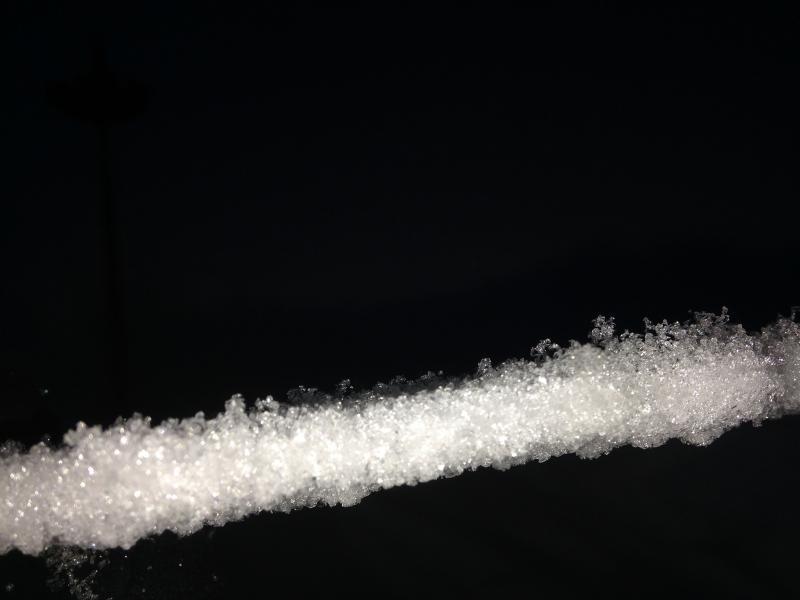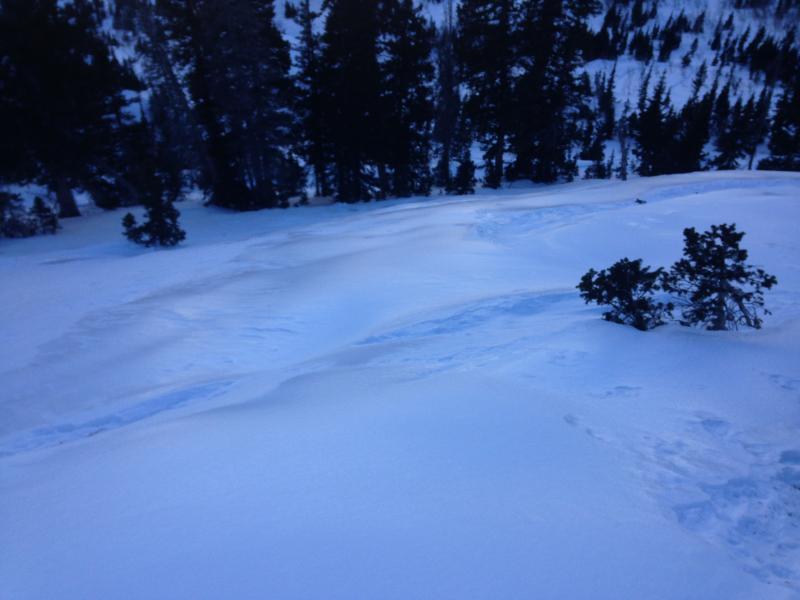Poked around a bit in upper White Pine, particularly the Red Baldy area, but with high snowpack variability (typical of Red Baldy even in a good year) take the ramblings below with a grain of salt. Digging and probing on the way up Red Baldy seemed to show a couple general snowpack setups. In the deposition areas (both wind and avalanche), such as the main gut on Red Baldy, the snowpack was generally between 130 and 150 cm deep. One pit in what seemed like an area representative of the deeper areas showed a snowpack that was more homogenous than I expected, mostly 1 finger in hardness. The old faceted snow from Nov and Dec was beginning to strengthen, while the snow on top from Jan was starting to facet (although not faceting as fast as in Dec due to warmer daytime temps; not sure this is true everywhere, maybe Brett has data to add). Although there is still some very week depth hoar, it was bridged by about 1 m of 1-finger snow. No results from stability tests. The other setup was the thinner areas, where the pack was 1 m deep or less. Didn't even bother digging in these areas as the ones I found were facets top to bottom. Could go from one setup to the other and back again in 10-20 feet. Concern would be if you found the intermediate between these two type of areas, with some continuity in the snowpack to allow propagation. I didn't on Red Baldy, which is good considering I was already there. I did dig another pit on a small north facing test slope at 9,200 feet (below the tri-chutes) that did have more of a slab over depth hoar, with relatively easy failure and complete propagation on depth hoar (ECTP22 Q1). Also spoke to a friend with good propagation in a PST on Dec facets in another drainage. Because of this potential to find a trap or two, I think pockets of moderate on upper elevation shady slopes is appropriate, thus the moderate chosen in danger rating field. Looking forward to the future, there are some interesting facet crust sandwiches out there, with many places where you have 2 thin crusts in the top couple cm, with small chained facets below as noted already by Evelyn (see photo below).








